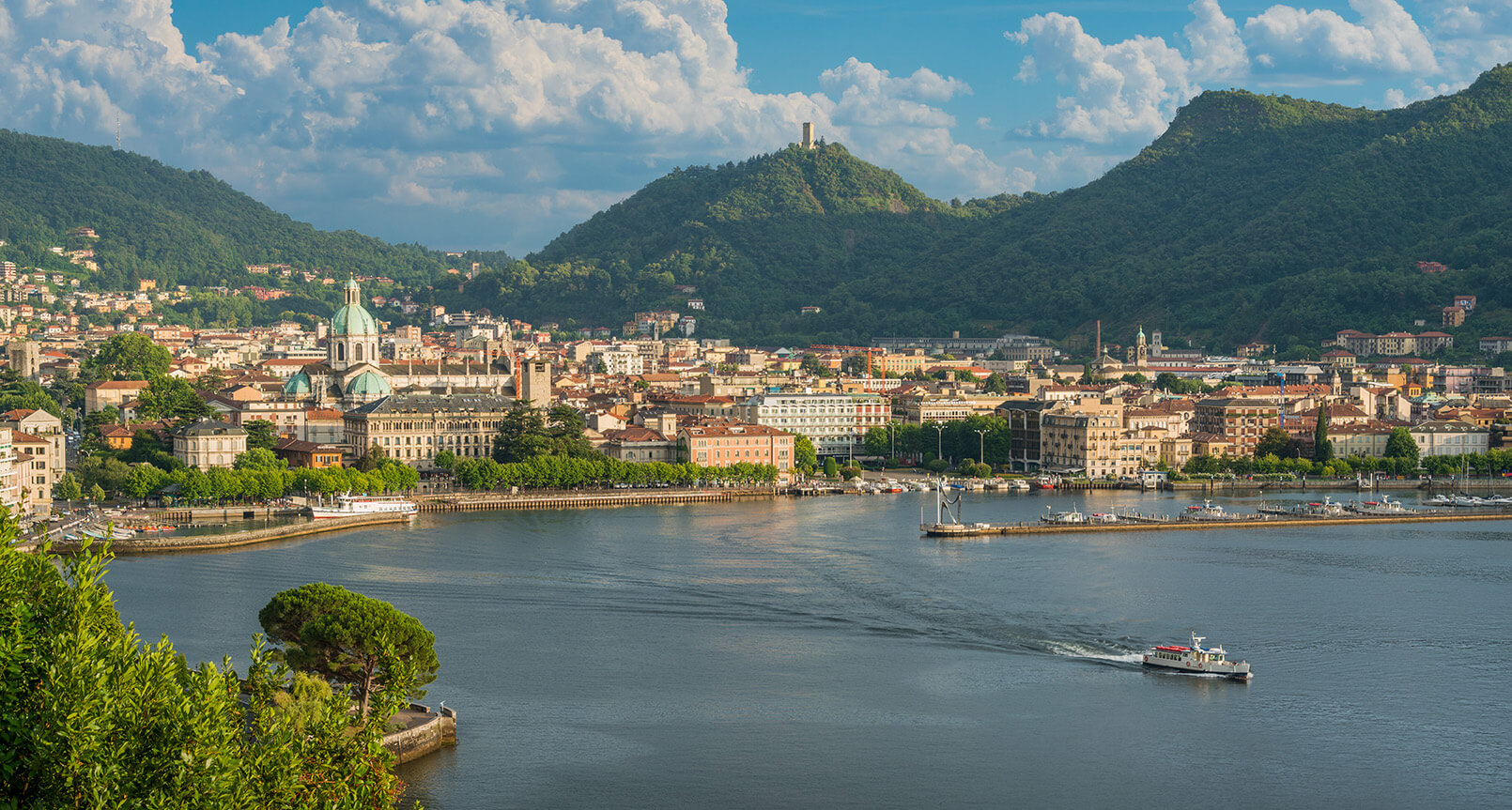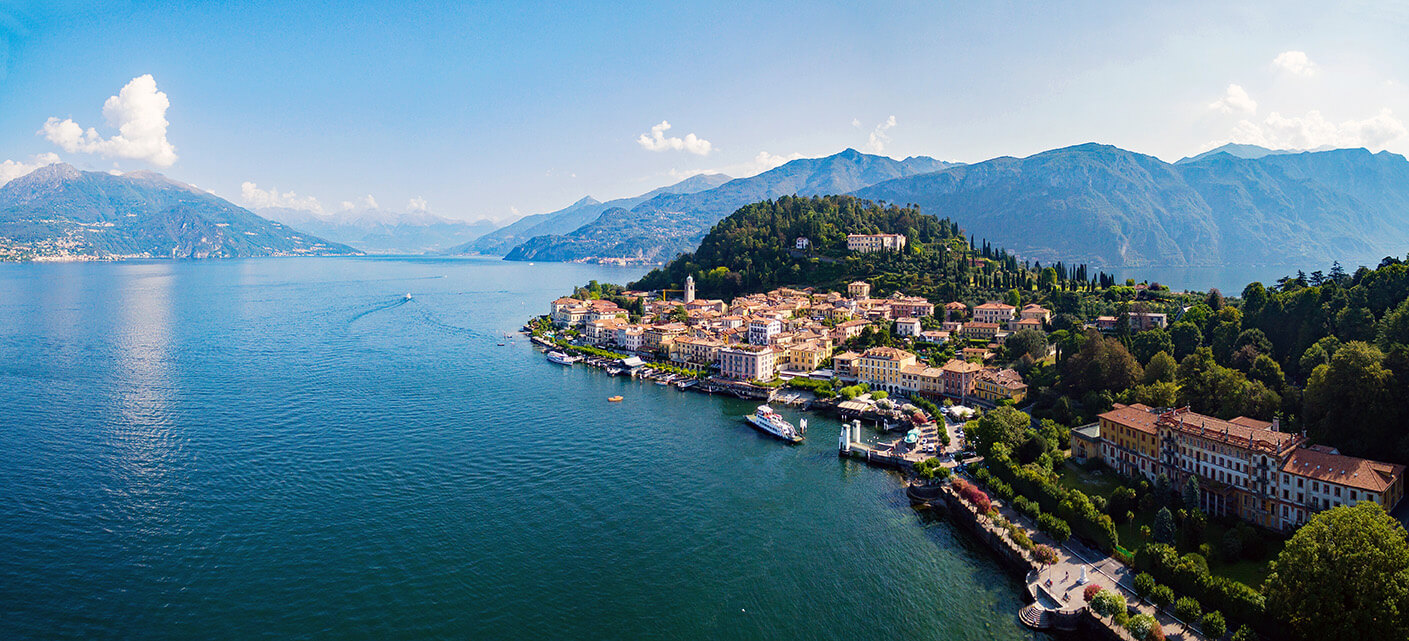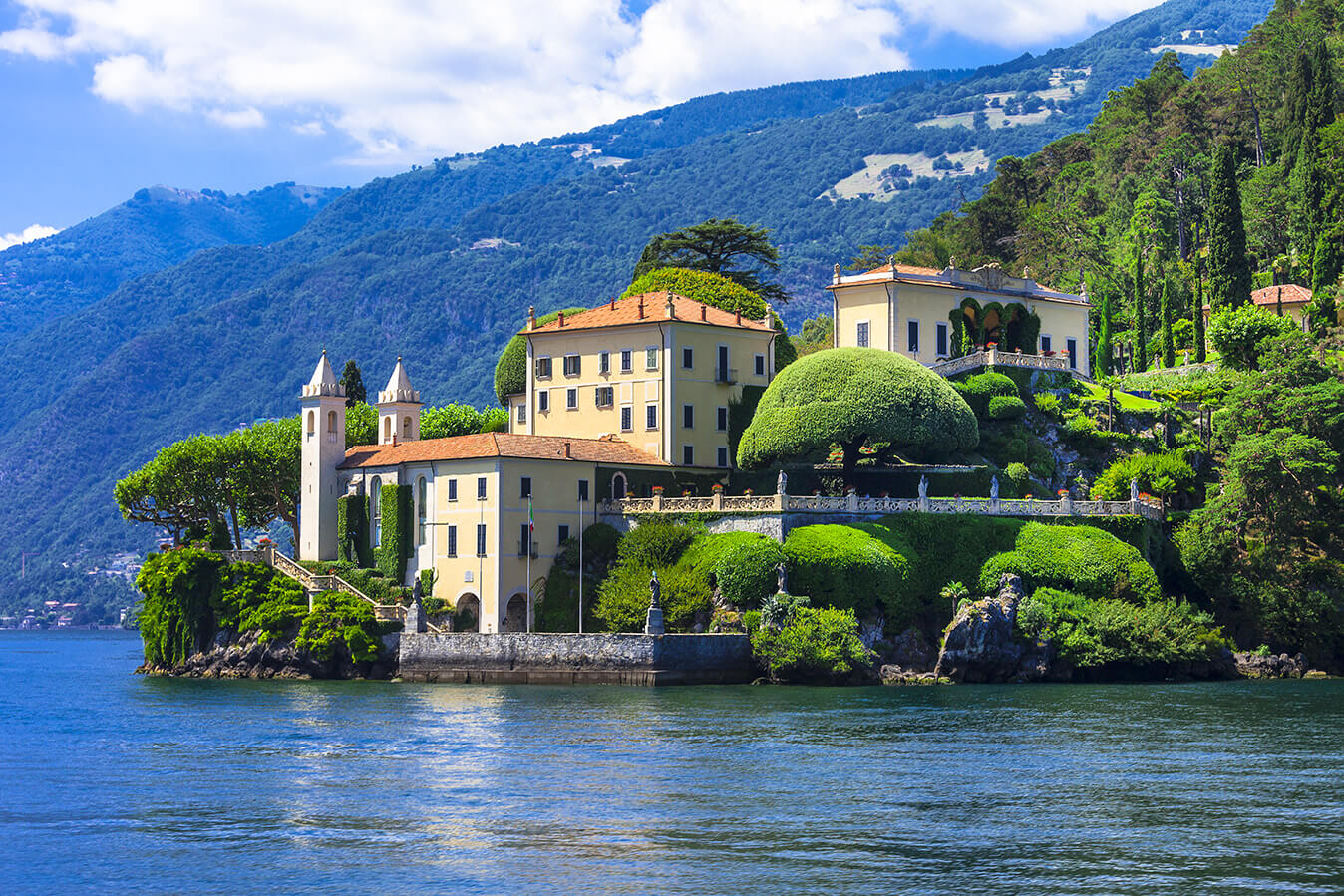




Como, nestled by its lake, remains hidden within the enclosed cavity between the mountain of Brunate and the Baradello hill, only signaled by the tower that rises as a stern proclamation of its steadfast defense. A city of noble native lineage, repeatedly and renewedly founded by the Romans, the northernmost among the most important Roman cities beyond the Po, an extreme outpost of Mediterranean civilization at the mountainous threshold of another Europe. The history of Como was significant not only in ancient times: perhaps even more remarkable was its ability to shape its own destiny in the medieval era, interpreting various aspects of the great communal epic in its own way, often aligning itself with the imperial side, with Frederick Barbarossa.
As an episcopal city, with a radical and steadfast intention for republican freedom, it was ready for extreme resistance and daring forays of struggle. A trace of this "episcopal epic" can be seen in the remains of the Episcopal Palace, one of the most notable examples of civic architecture in the Romanesque style. It was a communal city with astute statutory articulation, but also with a strong sense of community among its population, gathered in quarters and districts, with an open projection towards the surrounding lands beyond the four gates of the city walls (distinguished by the signs of the ox, the bear, the eagle, and the lion).
Como was also a city of merchants: a city not only of trade (by land along the famous Via Regina and by waterways), but also of fortunes wisely invested in industries, foremost among them being the silk industry. Until a few years ago, it held the title of "city of silk." In the heart of Como, the historical prosperity of the merchant city takes shape in the inseparable architectural pair of the Cathedral (whose construction began in 1396) and the Broletto (1215), united by a shared construction history. Inside the Cathedral, there is a monumental wooden altar from the 16th century dedicated to St. Abbondio. In its noble and well-structured monumental magnificence, the Cathedral stands amidst modest and beautiful houses, with walls woven in wooden beams and oblong bricks that surround it, constituting a civic treasure enclosed in marble as if engraved in diamond. The sculptural decoration of the façade is of great importance, mainly the work of the workshop of Giovanni Rodari and his sons, probable authors of the statues of the two Plinys, the Elder and the Younger, both emblems of one of the most illustrious family dynasties of scholars in all of antiquity. From the medieval city, the main tower of Baradello Castle remains, dominating the entire territory of the Camerlata hill. From the Torre Gate of 1192, the ancient entrance gate to the city, one could catch glimpses of the Gattoni Tower and the Vitali Tower. From the latter, a road leads to the Giovio Archaeological Museum, where artifacts from the Bronze and Iron Ages are preserved.
An important sight to see is also Piazza San Fedele, the true heart and reference point of the city since medieval times. It is also interesting to visit the 11th-century Romanesque Basilica dedicated to St. Abbondio, adorned with a cycle of 14th-century frescoes. The Romanesque style can also be admired in the 11th and 12th-century Basilicas of San Carpoforo and San Fedele, erected in the 12th century. From the Baroque period, we remember the Church of the Annunciata, the Church of San Giorgio, and the Church of Santa Cecilia. Lastly, we must not forget Villa Carminati, the 17th-century Villa Gallia, the austere Villa Parravicino, and the floral Villa Carlotta from the 18th century. Como is a city of culture, a metropolis with its own recognizable architecture. It is no coincidence that it is the capital city of its own art style, the "Romanesque-Comasca," which represents a unique and unmistakable artistic singularity within the architectural tradition that flourished along the shores of Lake Como, created by the Masters of Como.